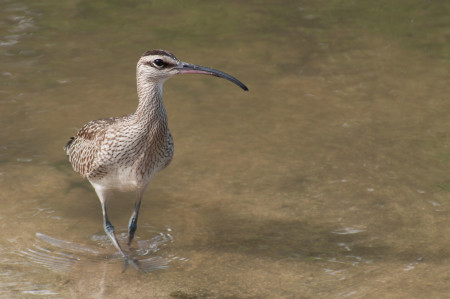
How to spot it:
Whimbrel are a large plain grey-brown shorebird, but its long down-curved bill and strong black head stripes are distinctive. Look for these waders in shallow wetlands and mudflats.
Where to find it:
Each fall thousands of Whimbrels fly from their breeding grounds in the Arctic to their winter homes in the Caribbean and coast of South America. These long-distance migrants may fly non-stop over the ocean to countries such as Guyana. Others stop at wetlands in the Dominican Republic, Virgin Islands, Trinidad and other islands where they spend the winter, or “refuel” before continuing south.
What does it eat?
Whimbrels use their long curved bills to probe deep into the soft mud for fiddler crabs, their primary winter food. They also eat fish, aquatic worms and insects. In their northern breeding grounds they add berries and even flowers to their diets.
Global status:
This species is declining in numbers, mostly due to destruction of its coastal habitats. In recent years scientists have been learning about the migration of Whimbrels by fitting them with small satellite transmitters. In 2009-2010, a bird named “Hope” was tracked and discovered to have a round-trip migration of 14,170 miles (22,800 km), from her breeding grounds in northwest Canada to her winter home at Great Pond, St Croix, US Virgin Islands.
